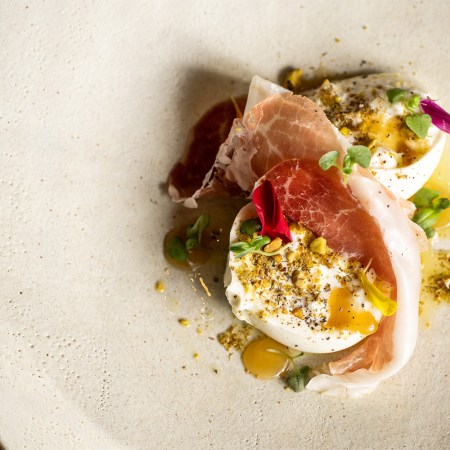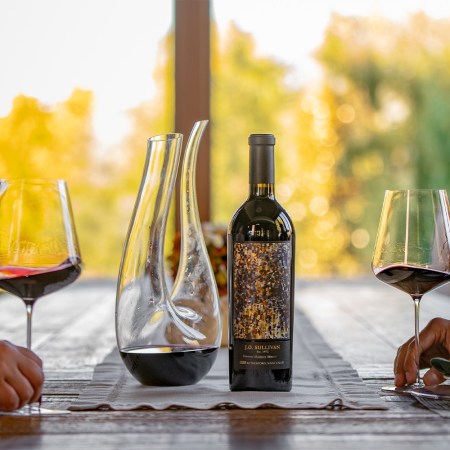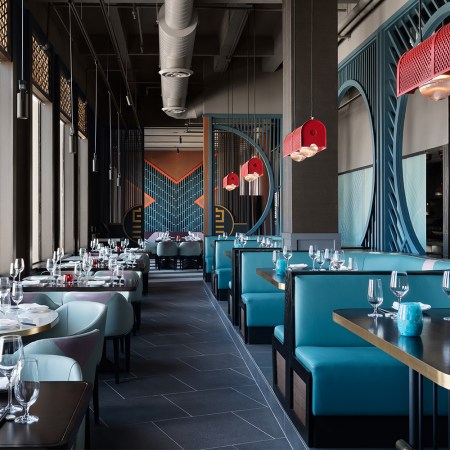“Curated.” “Artisan.” “Local.” These are all terms frequently applied to top restaurants these days, but today, we’re talking not about the recipes or the ingredients, but the vessels that contain them. For many chefs, plates, bowls and cups — not to mention the perfectly design salt well — exist in symbiosis with the edible contents they’re meant to hold.
It’s a newer trend, for sure. Seattle-based potter Akiko Graham recalls that when she first began sharing her handmade dishes with San Francisco restaurateurs in 2003, she was met with no small amount of skepticism.
“Many chefs were worried about using ‘handmade pottery,’” she tells InsideHook. “Rather, they would like to use white plates coming from mostly France, I heard, to use as a canvas for their dishes.”
Today, however, she’s just one of a growing number of artists providing a more unique foil for the food of some of the city’s hottest chefs. Here’s how these potters approach their functional art.

Erin Hupp
When Oakland-based artist Erin Hupp makes dishes for chefs like Val Cantu of two-Michelin-starred Californios or Kim Alter of Nightbird, she sees it as a true collaboration.
“When I work with [Cantu], he plates the food at our design meeting so we can better visualize the final plating,” says Hupp. “I then sketch out forms, dimensions and color options in my notebook. Once we agree on a concept, I go to my studio to create two to three prototypes that vary slightly from each other in color, size or shape. After those prototypes are complete, I bring them to the restaurant for the chef to plate. We discuss which of the prototypes pairs best with the food and plate on the prototypes before I make the full collection.”
One of her most recent creations for Cantu is a set of white moon dessert chargers.
“This expands our moon plate collection in which we explore the phases of the moon,” she explains. “The design is also a subtle nod to the Californios logo. The clay I used is incredibly short and unforgiving, which made this a fun challenge to make!”

MaryMar Keenan
At MMclay, MaryMar Keenan specializes in made-to-order pottery, with her flagship Progress Collection designed specifically for The Progress restaurant in San Francisco.
“I had the opportunity to walk through the space while it was in construction, while discussing the mood boards, design details and menu with the chef, Stuart Brioza,” she recalls. “All of those elements were considered while I was designing that body of work.”
She currently produces five unique lines for restaurants and homes.
“While none of these [other lines] were developed specifically for any particular restaurant, all of them were designed with the idea of the relationship of food and surface in mind,” she says. “I often say that the piece is not complete until there is something being served on it.”
Occasionally, Keenan produces elaborate custom pieces, such as a purposefully broken plate Alter of Nightbird commissioned.
“While I was skeptical at first, the outcome was stunning,” Keenan says of the piece.
“Seth Stowaway of Osito wanted a piece that he could actually light hay on fire inside of at the table for his guests,” she says of another highly specific design. “For these pieces, I switched to a flameware clay in order to make sure the piece could withstand the heat, and they were designed specifically to look like small unearthed caldrons. Being pushed in these directions can be challenging, and there is a certain amount of trust that I must have in both the process and in the vision.”

Cara Janelle
A Chicago native based in Barcelona, ceramicist Cara Janelle works with a wide range of restaurateurs around the world, cultivating an earthy style inspired by things like the texture of coral or the dusty color of pink quartz. Since she doesn’t have a catalogue, she often relies on Instagram to share her work with her would-be clients, but when a friend of a friend engineered a meeting with Michelin-starred Dominique Crenn, her “catalogue” was actually a suitcase of samples.
“Essentially, they were all experiments, because they were all different,” she recalls of the dozen or so pieces showing a range of textures, colors and clay types that so dazzled the chef. “It was kind of like, oh, you like anything I make, and not just this specific one.’”

Len Carella
Len Carella capitalizes on a host of media from stoneware to porcelain, leather to glass, to craft both his sculptures and functional ware. As a ceramicist for restaurants, he has worked exclusively with Chef Melissa Perello to create pieces for Octavia and Frances — mainly items for the beverage service, like mugs, cappuccino and espresso cups, and small bowls and platters for tables. His favorite piece for Octavia was crafted for the opening: a large oval stoneware plate.
“I love the oval shape as it feels fresh compared to a round dish,” he says. “I was looking for a way to make a dinner-size plate that was more interesting and special and found it in this oval shape. I also love how it feels and it’s very nice to eat from. I’ve ended up making this piece in porcelain as well as stoneware in a variety of colors for many clients since then. I also have these in my home and eat from them almost every evening.”

Akiko Graham
Hailing originally from Hokkaido, Japan, potter Akiko Graham has been based in Seattle since 1993. Her dishes have appeared on the tables of chefs including Daniel Patterson of the now-closed Coi and Melissa Perello of Frances.
In 2003, she recalls, Ron Siegel (ex-Masa’s) took a particular liking to her sake cups, asking the artist to craft lids so that he could use them as salt wells. When Siegel moved to the Ritz-Carlton in San Francisco, Graham says, “he took the jars with him.”
“I liked to make these because I like to make small things and also I like covered jars,” she says. “I like the process of making lids.”

Xavier Vega
Alongside Ester Luesma, Spain-based artist Xavier Vega has designed unique tableware including wooden podiums and banana leaf plates for Dominique Crenn and iridescent “Skitx” for Chef Michael Tusk at Quince. For each piece, says Vega, “two ideas are important: functionality and story.”
The former, he says, could refer to the stackability of a set of pieces or the ease of cleaning them. But it could also refer to the ways in which the pieces interact with innovations in cuisine itself.
“With the appearance of new food formats, new support needs for that food appear,” he says, evoking molecular gastronomy techniques like spherical or vapor-based dishes.

Lynn Mahon
Ceramicist Lynn Mahon is often inspired by the terrain of Northern California when crafting dishes for chefs like Kim Alter of Nightbird or Mourad Lahlou of Mourad.
“Most of the time I’ll develop some sort of relationship, either going to the restaurant to eat or having the chef up to my studio,” he says of his approach. “I prefer to do both — that makes the best collaboration. I find that when you become friends you’re able to make the best work to match the chef.”
The late chef Ken Tominaga, a pioneer of the Bay Area sushi scene and chef-owner of Hana who passed away this May at 61, was one such “great friend,” according to Mahon.
“I made a lot of plates for Ken, but the one that comes to mind is a fish-shaped plate,” he says. “These are sashimi trays that resemble an abstract fish shape. I added a lot of texture to the clay, which made them look pretty cool. I probably got inspired to make these plates from sitting at the sushi bar drinking sake with Ken, thinking, ‘You need something interesting here.’”
For Mahon, this relationship in particular was part of what spurred a departure from his earlier attitude towards more functional work about 20 years ago.
“As a younger potter I considered myself only an artist and never wanted to make anything utilitarian,” he says. “But I think the relationship with Chef Ken and his food made me think of a new route.”
This article was featured in the InsideHook SF newsletter. Sign up now for more from the Bay Area.






















